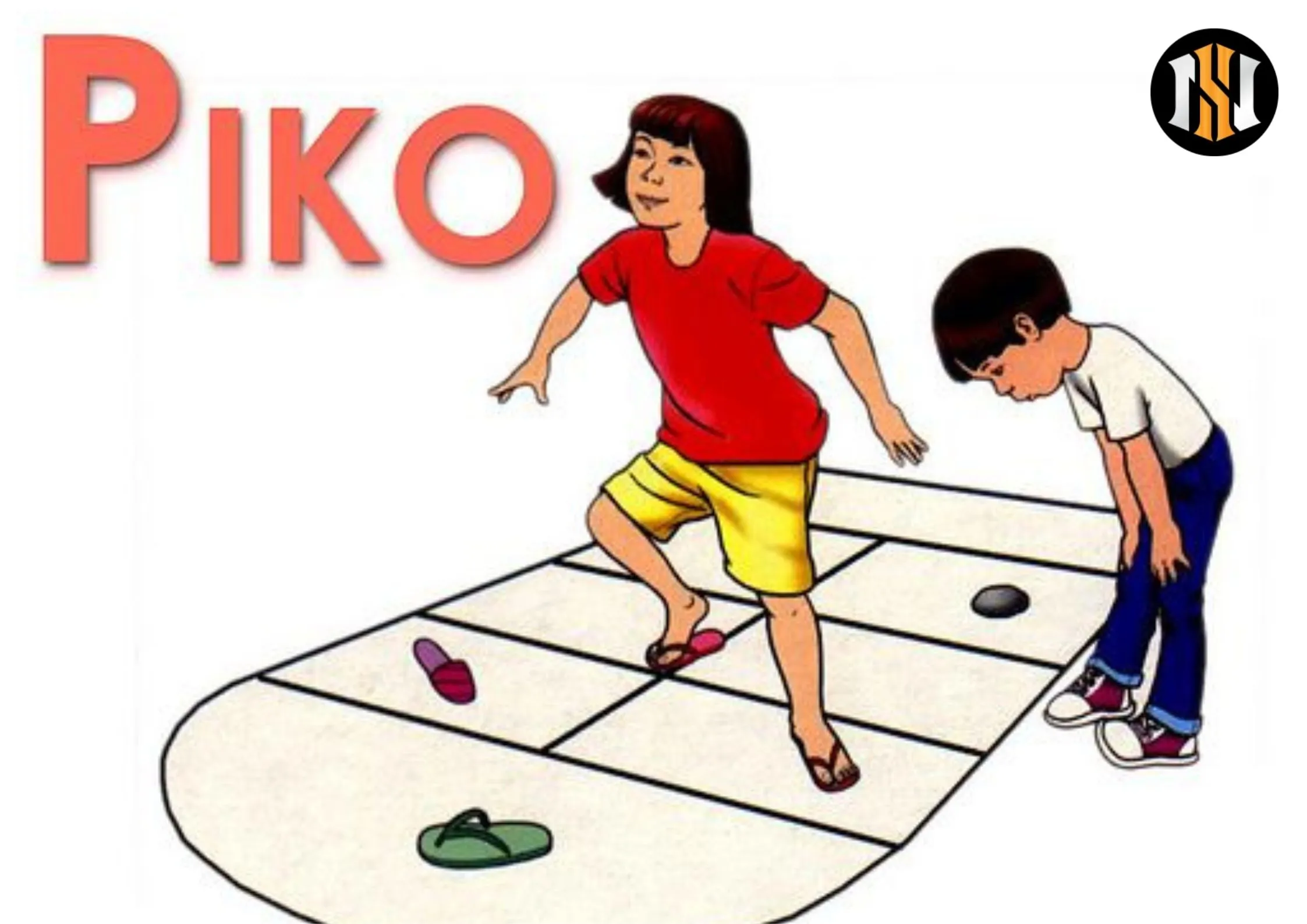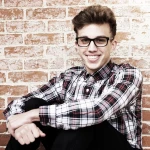Filipino culture is a vibrant treasure trove of traditions, and one remarkable aspect of this cultural wealth is the abundance of traditional Filipino games, also known as "larong Pinoy." These games have been enjoyed by Filipinos for generations, serving as a source of entertainment, camaraderie, and community physical activity. Throughout the passage of time, these games have endured, and their popularity remains unwavering. Join us on an enjoyable tour as we explore the world of traditional Filipino games, encompassing lively outdoor contests and engaging indoor pastimes that embody the spirit of "larong Pinoy."
Larong Pinoy: Exploring Outdoor Traditional Filipino Games
Piko
One of the most popular Filipino games is piko or hopscotch. It is a group game that can be played with as many people as you like. In contrast to games nowadays, piko requires a lot of jumping and physical activity.
Many of us played piko as children. Even today, you can see children playing piko on the streets. Despite its simple mechanics, it is still a fun game to play.
It is very easy to play "piko". To draw lines on the ground, you need a marker, usually chalk or charcoal. For this game, you will also need a "pamato", which is usually a stone or a broken pot.
 How to play the game:
How to play the game:
❶ Throw the stone on the marked area. Try to aim for number five. The player whose stone is nearest to the number five is the first to play and the stone furthest is the last one.
❷ The first player will throw the stone at the first box. Then, he will jump across the area without stepping into the first box.
❸ Before he returns, he should pick up his stone, still, without jumping on the first box.
❹ It’s the next player’s turn. He will only do what the first player did.
❺ After all players get to turn. The first player will now throw his stone on the second box and repeat the procedure, now not stepping on the second box.
❻ If a player steps on a line, they stop and let the next player try. They have to wait until their next turn to try again.
❼ The first player to reach the last box wins.
Luksong Tinik
Luksong Tinik is played by two teams with a nanay (leader) and anak (players). The nanay selects the highest jumper. Players jump over the base players' feet, then hands, without touching them. If successful, the difficulty increases. The nanay can save a player who fails, but if the nanay fails, teams switch. Variation: A stick is used, height increases, and teams switch if someone fails.
 The gameplay is as follows:
The gameplay is as follows:
❶ Gather Players: A minimum of 4 participants is required to play Luksong Tinik, but more players can join.
❷ Setup: Find an open space with enough room for players to move around. Two players sit facing each other on the ground with their legs stretched forward and their feet touching, forming the "base".
❸ Determine the height: The base player decides the height of the "thorn" (represented by a long bamboo stick or any long object). The thorns were originally placed on the base player's ankle.
❹ Start the game: the remaining players take turns jumping over the thorns without touching the thorns. The first jumper stands not far from the base player, ready to jump.
❺ Take-off order: The jumper first takes off with both feet, crosses the height of the thorns, and then lands on the other side. The bass player then raises the thorn slightly higher. Jumpers repeat the sequence until they pass the specified height.
❻ Increasing difficulty: After successfully clearing the thorns, the jumper returns to the starting position and faces another challenge. This time, the base player places the spine higher up, such as the mid-calf or knee. The high jumpers continue to take turns, climbing higher and higher over the thorns as the game progresses.
❼ Penalty: If the jumper touches a thorn while trying to jump, they will be penalized. Depending on the player's agreement, the penalty may be another attempt at the same height or a reset to the previous level.
❽ Rotation: Once the jumper successfully crosses the thorns at a certain height, it's their turn to be one of the base players. The previous base players take turns jumping over the thorns, while the new base players adjust the height of the thorns each time they jump.
❾ Game continues: The game continues, players take turns and gradually increase the height of the thorns. The goal is to reach the highest possible level while avoiding penalties.
❿ Win the game: The game ends when all players are penalized or a player decides to stop. The player who successfully clears the highest level of thorns without penalty is considered the winner.
Luksong Tinik is a traditional Filipino game that encourages physical activity and teamwork among players. It is one of the many beloved traditional Filipino games that have been passed down through generations. This game is perfect for playing with your family and frie nds, allowing you to bond and have fun while immersing yourself in the rich cultural heritage of the Philippines. By incorporating traditional Filipino games into your leisure time, you not only promote an active and healthy lifestyle but also preserve and celebrate the unique traditions of the country. So gather your loved ones, get active, and dive into the exciting world of traditional Filipino games like Luksong Tinik!
Tumbang Preso
Tumbang Preso, a traditional Filipino game and a prominent example of Larong Pinoy, transcends mere entertainment to become an invigorating outdoor activity that cultivates strategic planning skills and agility among its participants. For generations, children in the Philippines have reveled in this form of social play, predating the advent of the internet and electronic devices. Tumbang Preso, with its roots firmly grounded in the rich heritage of Larong Pinoy, embodies the spirit of joyful physical engagement and the development of essential skills. This beloved game serves as a testament to the enduring cultural significance of traditional Filipino games, offering a delightful and energetic experience that encourages active participation and fosters the preservation of our cultural legacy.
The goal is to whack a guarded "prisoner" or "can" with a designated implement, then expertly retrieve the same implement without being caught by the guards. Participation in traditional Filipino games such as Tumbang Preso not only promotes active participation but also preserves the cultural heritage of the Philippines, providing an enjoyable and enriching experience for players of all ages.
 Tumbang Preso rules and how to play:
Tumbang Preso rules and how to play:
❶ Equipment: To play Tumbang Preso, you'll need an empty tin can (usually a condensed milk can or something similar in size) and a slipper or flat object as a hitting tool.
❷ Set up: Find an open area, such as a backyard, park, or playground, with plenty of room to run around. Place the empty tin can vertically in the center of the play area.
❸ Choose "It" or "Guard": Decide who will be "It" or "Guard" in the game. The role of this person is to protect the tin can.
❹ Start the game: The rest of the players stand some distance from the tin can in a line or designated starting point.
❺ Goal: The goal of Tumbang Preso is for the player to knock down the tin can by throwing a slipper or hitting a tool while avoiding being marked or caught by the "guards".
❻ Gameplay: The game starts when the "Guard" says "Tumbang Preso!" Players take turns throwing the slipper at the tin can with the aim of knocking it down. "Guards" can move around and protect the tin can by catching or retrieving slippers thrown by the player. Players score points if their slippers hit the tin can and knock it over.
❼ Avoiding Capture: Players must also avoid being tagged or captured by "guards" when attempting to hit the tin can. If a player is flagged, they will be temporarily out of play or penalized, depending on the agreed-upon rules.
❽ Score & Win: Players can accumulate points by successfully knocking down tin cans. The first player to reach a predetermined score goal or the player with the highest score at the end of the game is declared the winner.
It is important to keep in mind that the rules and gameplay of Tumbang Preso, like many other traditional Filipino games, may vary by region or by the individual playing the game. This cherished traditional Filipino game, along with a rich assortment of other traditional Filipino games, is all about having fun, being active, and embracing the spirit of these time-honored activities. Traditional Filipino games hold a specia l place in the cultural heritage of the Philippines, and they provide a wonderful opportunity to connect with the country's traditions and promote social interaction among players. So gather your friends and family, delve into the world of traditional Filipino games, and create lasting memories filled with laughter and enjoyment.
How to Play the Color Game - A Traditional Filipino Game (Larong Pinoy)
The Color Game, known as "larong pinoy" in Filipino, is a popular and simple game that can be played by several players. The objective of this traditional Filipino game is to quickly name a color based on the color of the displayed text. Players race against each other, shouting out the correct color name before anyone else. It's a fun and engaging activity often enjoyed by both children and adults during gatherings and events. The Color Game, or larong pinoy, adds a touch of excitement and friendly competition to any occasion.
❶ Gather players: The game requires a minimum of two players, but it can also be played in larger groups.
❷ Select a moderator: The game should be controlled by one player. Colors can be managed, displayed, and scores can be kept.
❸ Choose a color list: Write color names in different colors. The word "RED" could be written in blue text, "YELLOW" in green text, etc.
❹ Start the game: The moderator displays the first color word from the list in a different color. In the example above, if the word "BLUE" is displayed in red text, players should say "RED" as quickly as possible.
❺ Race to answer: Each player should try to say the correct color name first. Points are awarded to the first player to shout out the correct color name.
❻ Keep track of points: Each player's score is kept by the moderator. For each round, points can be awarded to the player who answered correctly first.
❼ Continue playing: Display a new color word in a different color after each round. Play as many rounds as you like and keep track of your scores.
❽ Declare a winner: The player with the most points wins.
Some additional tips:
Increase the speed at which the color words are displayed to make the game more challenging.
It's more important to focus on the color of the text than the words themselves. As our brains process meaning of words faster than color information, this can be tricky.
Players should be encouraged to play fair and show good sportsmanship.
Play the Color Game and have fun!











